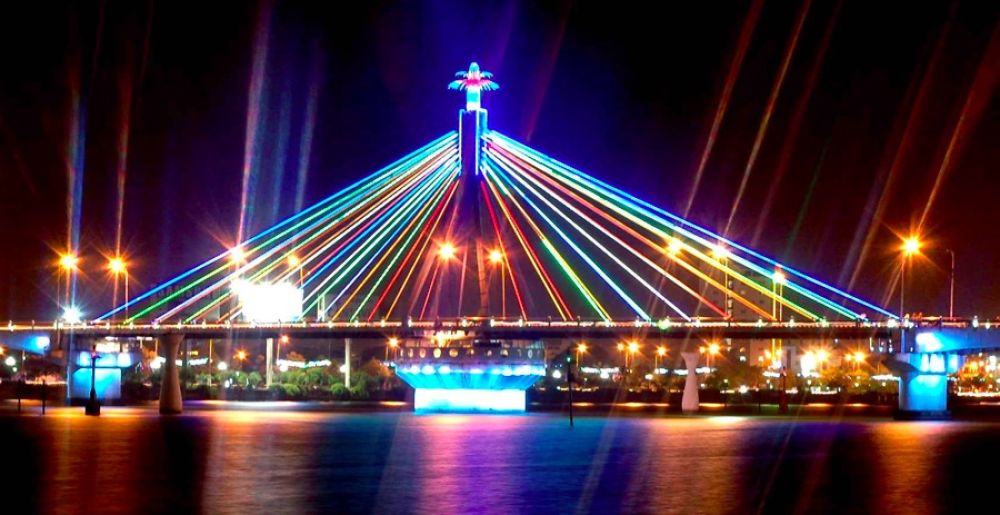

The city of Da Nang, situated along the coast of the South China Sea in Central Vietnam, has a rich history that plays a pivotal role in its tourism. The Han River Bridge is not merely an infrastructural accomplishment but also a symbol of the city's development and modernization.
Opened to the public in March 2000, the Han River Bridge was the first swing bridge to be built in Vietnam, connecting the eastern and western parts of the city. This engineering feat spurred the connection between the beaches along the eastern seafront and the downtown area of Da Nang, making it a catalyst for urban development and a tourist attraction in its own right.
The establishment of the Han River Bridge has been instrumental in boosting the city's economy, particularly in terms of tourism. It became an architectural icon, intriguing tourists with its nightly light display and the unique ability to swing on its axis to allow ship passage. The bridge becomes a focal point for visitors during special occasions and festivals, with impressive firework displays and cultural events that highlight Vietnamese customs and the spirit of Da Nang.
In recent times, the tourism trend in Da Nang has been leaning towards experiential and sustainable practices. Tourists are increasingly drawn towards authentic cultural experiences and eco-tourism. The city, including the Han River Bridge area, has seen a rise in community-based tours, eco-friendly accommodations, and increased awareness around preserving the cultural integrity and environmental beauty of the region.
Furthermore, the city has developed significantly in terms of infrastructure, increasing its appeal as a destination for international conferences and events, which, in turn, has bolstered business tourism. Da Nang is now recognized as one of the leading cities in Vietnam for tourism, with the Han River Bridge serving as a gateway to the city's numerous attractions, including the Marble Mountains, My Khe Beach, and the Museum of Cham Sculpture.
Looking ahead, Da Nang's tourism sector continues to evolve, with plans to expand the international airport and improve public transportation systems. The local government aims to make the city a “smart city” by 2030, enhancing tourist experiences through technology. The Han River Bridge will likely remain an enduring emblem in this dynamic landscape, attracting visitors with its blend of modernity and tradition for years to come.
As the interest in Vietnamese culture and history grows globally, Da Nang and the Han River Bridge will continue to be a compelling destination for tourists seeking both the allure of contemporary urban settings and the charm of historical sites.
When planning a visit to the Han River Bridge, tourists are recommended to view the bridge at night when it is illuminated by colorful lights, creating a mesmerizing spectacle reflecting on the river's surface. Additionally, witnessing the bridge rotate on Saturday and Sunday nights at 11 PM is a unique experience not to be missed.
The Han River Bridge not only connects two geographical points but also bridges the gap between Da Nang's past and its future, making it an unmissable stop on any traveler's itinerary.